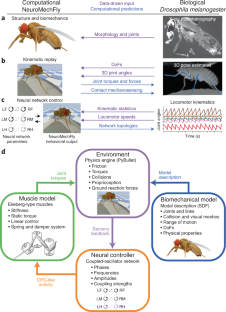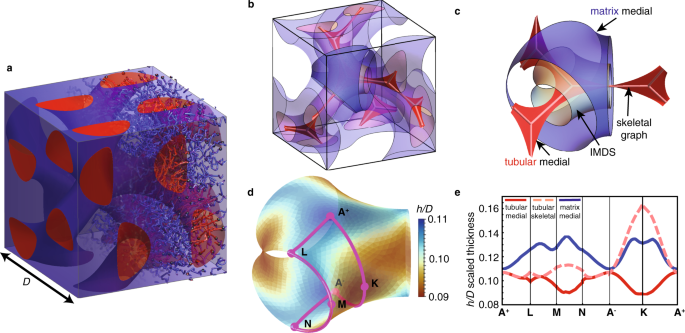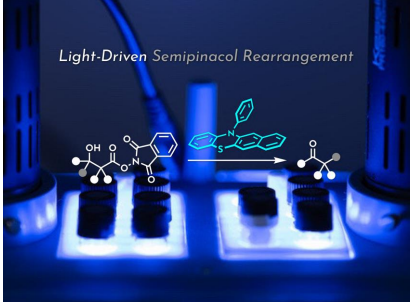2022-05-16 スイス連邦工科大学ローザンヌ校(EPFL)
ラムディアのグループは、EPFLのバイオロボティクス研究所のAuke Ijspeert教授のグループと共同で、「Nature Methods」に論文を発表し、「NeuroMechFly」と名付けられたハエDrosophila melanogasterの正確な「デジタルツイン」を世界で初めて実現したことを発表しました。
<関連情報>
- https://actu.epfl.ch/news/neuromechfly-a-digital-twin-of-drosophila/
- https://www.nature.com/articles/s41592-022-01466-7
キイロショウジョウバエ成虫の神経メカニカルモデル「NeuroMechFly」 NeuroMechFly, a neuromechanical model of adult Drosophila melanogaster
Victor Lobato-Rios,Shravan Tata Ramalingasetty,Pembe Gizem Özdil,Jonathan Arreguit,Auke Jan Ijspeert & Pavan Ramdy
Nature Methods Published: 11 May 2022

Abstract
Animal behavior emerges from an interaction between neural network dynamics, musculoskeletal properties and the physical environment. Accessing and understanding the interplay between these elements requires the development of integrative and morphologically realistic neuromechanical simulations. Here we present NeuroMechFly, a data-driven model of the widely studied organism, Drosophila melanogaster. NeuroMechFly combines four independent computational modules: a physics-based simulation environment, a biomechanical exoskeleton, muscle models and neural network controllers. To enable use cases, we first define the minimum degrees of freedom of the leg from real three-dimensional kinematic measurements during walking and grooming. Then, we show how, by replaying these behaviors in the simulator, one can predict otherwise unmeasured torques and contact forces. Finally, we leverage NeuroMechFly’s full neuromechanical capacity to discover neural networks and muscle parameters that drive locomotor gaits optimized for speed and stability. Thus, NeuroMechFly can increase our understanding of how behaviors emerge from interactions between complex neuromechanical systems and their physical surroundings.



